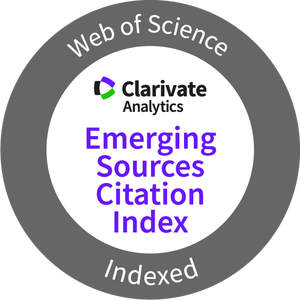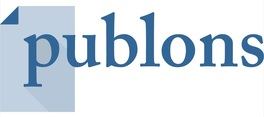Improving students' martial arts skills and fitness through an innovative e-module
Abstract
The aim of this study was to develop the Physical Education, Sports, and Health module by incorporating pencak silat material along with physical fitness activities to enhance the physical fitness of seventh-grade students. The Borg and Gall model, which comprises potential and issues, data gathering, product design, design validation, design revision, product testing, and product revision, was the research methodology that was employed. Lecturers, instructors, and students composed the research population. Validation sheets were used for validators and questionnaires were used for students during the data gathering phase. Professionals in the martial arts used a grid to evaluate students' skills. In the meanwhile, to evaluate students' physical fitness, the Harvard Step Up Test was used. The following results were obtained: 1) The last module (E) is highly practical to utilize as martial arts lesson material for class VII students, along with physical fitness training exercises. 2) Utilizing e-modules to learn can enhance students' proficiency in fundamental martial arts techniques. 3) Students' physical fitness improves when physical fitness training exercises are integrated with martial arts skills. In conclusion, the pencak silat learning e-module, which is backed by physical fitness training, is deemed extremely viable to be utilized as teaching material and enhance students' physical fitness.
Downloads
-
Abstract394
-
PDF355
References
Anderson, E., & Durstine, J. L. (2019). Physical activity, exercise, and chronic diseases: A brief review. Sports Medicine and Health Science, 1(1), 3–10. https://doi.org/10.1016/j.smhs.2019.08.006
Arikunto, S. (2010). Metode peneltian. Rineka Cipta.
Arwandi, J., Bais, S., Padli, Zarya, F., Haryanto, J., Putra, T. I., Mardela, R., & Soniawan, V. (2023). The effects of training using an android-based media blocker tool on the West Sumatra pelatprov sepaktakraw smash in 2023. Journal of Physical Education and Sport, 23(12), 3391–3399. https://doi.org/10.7752/jpes.2023.12389
Bafirman, B., Munir, A., Zarya, F., & Nia, T. A. (2023). Comparison of Learning Methods Based on Animals Name and Conventional Learning to Improve Free Throw Shooting Skills in Basketball Games. International Journal of Human Movement and Sports Sciences, 11(5), 1150–1157. https://doi.org/10.13189/saj.2023.110524
Bafirman, B., Zarya, F., Wahyuri, A. S., Ihsan, N., & Batubara, R. (2023). Improving the martial art skills and physical fitness quality of students grade VII through e-module development. Journal of Physical Education and Sport, 23(12), 3271–3281. https://doi.org/10.7752/jpes.2023.12374
Bodden, J. G., Needham, R. A., & Chockalingam, N. (2015). The effect of an intervention program on FMS test scores in MMA athletes. Journal of Strength and Conditioning Research / National Strength & Conditioning Association, 29(1), 219–225. https://doi.org/10.1519/JSC.0b013e3182a480bf
Bullo, V., Bergamin, M., Gobbo, S., Sieverdes, J. C., Zaccaria, M., Neunhaeuserer, D., & Ermolao, A. (2015). The effects of Pilates exercise training on physical fitness and wellbeing in the elderly: A systematic review for future exercise prescription. Preventive Medicine, 75, 1–11. https://doi.org/10.1016/j.ypmed.2015.03.002
Cao, J., Bucher, D. F., Hall, D. M., & Eggers, M. (2022). A graph-based approach for module library development in industrialized construction. Computers in Industry, 139, 1-13. https://doi.org/10.1016/j.compind.2022.103659
Cattuzzo, M. T., dos Santos Henrique, R., Ré, A. H. N., de Oliveira, I. S., Melo, B. M., de Sousa Moura, M., de Araújo, R. C., & Stodden, D. (2016). Motor competence and health related physical fitness in youth: A systematic review. Journal of Science and Medicine in Sport, 19(2), 123–129. https://doi.org/10.1016/j.jsams.2014.12.004
Dieli-conwright, C. M., Courneya, K. S., Demark-wahnefried, W., Sami, N., Lee, K., Sweeney, F. C., Stewart, C., Buchanan, T. A., Spicer, D., Tripathy, D., Bernstein, L., & Mortimer, J. E. (2018). Aerobic and Resistance Exercise Improves Physical Fitness, Bone Health, and Quality of Life in Overweight and Obese Breast Cancer Survivors: A Randomized Controlled Trial. Breast Cancer Research, 20(1), 1–10. https://doi.org/10.1186/s13058-018-1051-6
Erianti, E., Pitnawati, P., Astuti, Y., Zulbahri, Z., Damrah, D., & Sari, D. N. (2022). a-Practicum Module Development of Adaptive Physical Education Courses. Linguistics and Culture Review, 6(2), 450–464. https://doi.org/10.21744/lingcure.v6ns2.2137
Fletcher, G. F., Landolfo, C., Niebauer, J., Ozemek, C., Arena, R., & Lavie, C. J. (2018). Promoting Physical Activity and Exercise: JACC Health Promotion Series. Journal of the American College of Cardiology, 72(14), 1622–1639. https://doi.org/10.1016/j.jacc.2018.08.2141
Gray, C., Gibbons, R., Larouche, R., Sandseter, E. B. H., Bienenstock, A., Brussoni, M., Chabot, G., Herrington, S., Janssen, I., Pickett, W., Power, M., Stanger, N., Sampson, M., & Tremblay, M. S. (2015). What is the relationship between outdoor time and physical activity, sedentary behaviour, and physical fitness in children? A systematic review. International Journal of Environmental Research and Public Health, 12(6), 6455–6474. https://doi.org/10.3390/ijerph120606455
Gu, X., Chang, M., & Solmon, M. A. (2016). Physical Activity, Physical Fitness, and Health-Related Quality of Life in School-Aged Children. Journal of Teaching in Physical Education, 35(2), 117–126. https://doi.org/10.1123/jtpe.2015-0110
HB, B., Wahyuri, A. S., Zarya, F., Sabillah, M. I., & Annasai, F. (2023). Revitalizing student physical fitness: The vital role of post?pandemic physical activity programs. Fizjoterapia Polska / Polish Journal of Physiotherapy, 23(4), 226–232. https://doi.org/10.56984/8ZG20A4D3
Huang, Z., Wu, J., Zhu, W., Wang, Z., Mehrotra, S., & Zhao, Y. (2021). Visualizing complex networks by leveraging community structures. Physica A: Statistical Mechanics and Its Applications, 565, 1-18. https://doi.org/10.1016/j.physa.2020.125506
Kampshoff, C. S., Chinapaw, M. J., Brug, J., Twisk, J. W., Schep, G., Nijziel, M. R., van Mechelen, W., & Buffart, L. M. (2015). Randomized controlled trial of the effects of high intensity and low-to-moderate intensity exercise on physical fitness and fatigue in cancer survivors: results of the Resistance and Endurance exercise After ChemoTherapy (REACT) study. BMC Medicine, 13, 1-12. https://doi.org/10.1186/s12916-015-0513-2
Kusumayanti, D., & Astuti, C. C. (2021). Android Based E-Module Development on Computer Learning and Basic Networks Class X TKJ. Journal of Information and Computer Technology Education, 5(1), 24–30. https://doi.org/10.21070/jicte.v5i1.1335
Langhammer, B., Bergland, A., & Rydwik, E. (2018). The Importance of Physical Activity Exercise among Older People. BioMed Research International, 2018, 1-4. https://doi.org/10.1155/2018/7856823
Look, T. (2016). Association of the magnitude of weight loss and changes in physical fitness with long-term cardiovascular disease outcomes in overweight or obese people with type 2 diabetes: a post-hoc analysis of the Look AHEAD randomised clinical trial. The Lancet Diabetes and Endocrinology, 4(11), 913–921. https://doi.org/10.1016/S2213-8587(16)30162-0
Munir, A., Sumaryanti, Rismayanthi, C., Nasrulloh, A., Padli, Prayoga, A. S., Nia, T. A., Zarya, F., & Rahman, D. (2024). The effect of animal name and wall shoot training on the accuracy of shooting free throw in terms of hand eye coordination in beginner athletes. Retos, 56, 538–545. https://doi.org/10.47197/retos.v56.104895
Neira, M., Erguler, K., Ahmady-Birgani, H., AL-Hmoud, N. D., Fears, R., Gogos, C., Hobbhahn, N., Koliou, M., Kostrikis, L. G., Lelieveld, J., Majeed, A., Paz, S., Rudich, Y., Saad-Hussein, A., Shaheen, M., Tobias, A., & Christophides, G. (2023). Climate change and human health in the Eastern Mediterranean and Middle East: Literature review, research priorities and policy suggestions. Environmental Research, 216, 1-23. https://doi.org/https://doi.org/10.1016/j.envres.2022.114537
Ng, D. T. K., Ng, E. H. L., & Chu, S. K. W. (2022). Engaging students in creative music making with musical instrument application in an online flipped classroom. Education and Information Technologies, 27(1), 45–64. https://doi.org/10.1007/s10639-021-10568-2
Nyenhuis, S. M., Greiwe, J., Zeiger, J. S., Nanda, A., & Cooke, A. (2020). Exercise and Fitness in the Age of Social Distancing During the COVID-19 Pandemic. Journal of Allergy and Clinical Immunology: In Practice, 8(7), 2152–2155. https://doi.org/10.1016/j.jaip.2020.04.039
Oktariyana, O., & Oktariyani, O. (2020). Application of Electronic Module Teaching Materials to Improve Student Learning Outcomes in Rhythmic Gymnastics Subject. Kinestetik: Jurnal Ilmiah Pendidikan Jasmani, 4(2), 122–127. https://doi.org/10.33369/jk.v4i2.12529
Padli, P., Kiram, Y., Arifianto, I., Setiawan, Y., Haryanto, J., & Lesmana, H. S. (2022). The effect of online-based assignment responses and student creativity in PJOK during pandemic in rural and urban area. Jurnal Keolahragaan, 10(1), 127–136. https://doi.org/10.21831/jk.v10i1.48652
Patah, I. A., Jumareng, H., Setiawan, E., Aryani, M., & Gani, R. A. (2021). The Importance of Physical Fitness for Pencak Silat Athletes: Home-Based Weight Training Between Tabata and Circuit Can it Work? Journal Sport Area, 6(1), 108–122. https://doi.org/10.25299/sportarea.2021.vol6(1).6172
Pristianto, A., Simatupang, N. K., Putri, L. D., & Lutfhi, N. (2022). Edukasi Physical Fitness Exercise Untuk Meningkatkan Daya Tahan Kardiorespirasi Siswa Smp Muhammadiyah 5 Surakarta. Jurnal Pengabdian Kepada Masyarakat, 3(4), 593–601. https://doi.org/10.31949/jb.v3i4.3332
Putra, A. N., Zarya, F., Bahtra, R., & Sepriadi. (2023). The Development of a differentiation-based learning model in football school students. Journal of Physical Education and Sport, 23(12), 3282–3291. https://doi.org/10.7752/jpes.2023.12375
Saputri, T., Djuwari, D., Authar, N., saleh, N. R., Asmara, B., Rahmadani, N. P., & Chrestina, D. A. (2022). Application of Interactive English E-Module with Flipbook Application for Early Childhood Education Students. Indonesa Berdaya, 3(4), 1079–1092. https://doi.org/10.47679/ib.2022351
Voithofer, R. (2005). Designing New Media Education Research: The Materiality of Data, Representation, and Dissemination. Educational Researcher, 34(9), 3–14. https://doi.org/10.3102/0013189X034009003
The works and papers that are published in this Journal are subject to the following terms:
1. The Publication Service of the University of Murcia (the publisher) has the Publication Rights (Copyright) to the published papers and works, and favors and permits the reusing of the same under the license indicated in point 2.
© Servicio de Publicaciones, Universidad de Murcia, 2013
2. The papers and works are to be published in the digital edition of the Journal under the license Creative Commons Reconocimiento-No Comercial-Sin Obra Derivada 3.0 España (legal text). The copying, using, spreading, transmitting and publicly displaying of the papers, works or publication are permitted as long as: i) the authors and original sources (Journal, publisher and URL of the publication) are quoted; ii) it is not used for commercial benefit; iii) the existence and specifications of this users license are mentioned.
3. Conditions of Self-Archiving. It is permitted and encouraged that the authors spread electronically the pre-print (before printing) and/or post-print (the revised, evaluated and accepted) versions of their papers or works before their publication since this favors their circulation and early diffusion and therefore can help increase their citation and quotation, and also there reach through the academic community.
The works and papers that are published in this Journal are subject to the following terms:
1. The Publication Service of the University of Murcia (the publisher) has the Publication Rights (Copyright) to the published papers and works, and favors and permits the reusing of the same under the license indicated in point 2.
© Servicio de Publicaciones, Universidad de Murcia, 2013
2. The papers and works are to be published in the digital edition of the Journal under the license Creative Commons Reconocimiento-No Comercial-Sin Obra Derivada 3.0 España (legal text). The copying, using, spreading, transmitting and publicly displaying of the papers, works or publication are permitted as long as: i) the authors and original sources (Journal, publisher and URL of the publication) are quoted; ii) it is not used for commercial benefit; iii) the existence and specifications of this users license are mentioned.
3. Conditions of Self-Archiving. It is permitted and encouraged that the authors spread electronically the pre-print (before printing) and/or post-print (the revised, evaluated and accepted) versions of their papers or works before their publication since this favors their circulation and early diffusion and therefore can help increase their citation and quotation, and also there reach through the academic community.

















